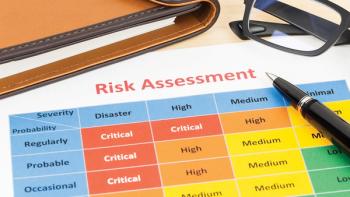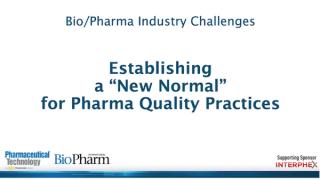
Quality Assurance/Quality Control
Latest News
Latest Videos
More News

Zaim Gashi, area sales manager of Steriline, discussed the evolution of aseptic processing equipment in line with current regulatory requirements at CPHI Milan.

Andrew Lewis, PhD, Chief Scientific Officer, Quotient Sciences, discussed the CMC challenges with GLP-1 and oral peptides during CPHI Milan.

Contract organizations offer assistance when managing changes to material suppliers during a product’s lifecycle.

Viral vectors and other complex biologic modalities require more specificity and higher sensitivity to detect and distinguish contaminants.

The growing use of continuous manufacturing in the pharmaceutical industry merits a review of the application of dry cleaning and sanitization methods, especially for non-sterile oral solid drug product manufacturing of dry powders.

Manual and automated inspection technologies have their own advantages and limitations.

The US Pharmacopeia’s Microbiology Expert Committee approved the inclusion of a chapter into the United States Pharmacopeia–National Formulary that allows the use of non-animal-derived reagents for endotoxin testing.

Using one system for test execution and sample management, improving right-first-time, and allowing review by exception can deliver access to key lab data faster.

This paper reflects upon the past 15 years of experience in the application of QRM and KM within the pharmaceutical GMP environment.

Life sciences data sets can be vast and complex to process, but up to now bringing intelligent automation systems up to speed and validating them has felt debilitatingly onerous. Large language models tackle these barriers head on. Ramesh Ramani and RaviKanth Valigari, technology innovators at ArisGlobal, explain.

Here, Pavan Kumar Kunala from Almac Sciences runs through the different types of tests used to analyze drug substances to ensure quality and safety.

A statistical analysis for determining an expiration date can be applied to replicates or their corresponding averages as suggested in industry guidelines.

The final drug product relies on the quality and reliability of the raw materials used in its production.

Lonza’s Joe Garrity and Jerry Jiang discuss the importance of not only automating CGT manufacturing, but also standardizing across processes.

EMA is promoting the use of RWD in decision-making and has started a public consultation to review its draft recommendations.

A combination of rapid sterility methods with the industry standard compendial method should ensure maximum safety.

Determining E&L risk from single-use components can be used to build the level of extractable profiling and PERLs.

Reliance-Based Waivers Become the Predominant Trend in In-Country Testing of Pharmaceutical Products
This study reviews changes in in-country testing (registration testing, import testing) requirements and analyzes current trends. In the context of international harmonization of good practices and standards as well as the improved information exchange between national regulatory authorities, in-country testing is considered outdated and redundant in many cases.

Digital transformation is allowing for better handling, analysis, and protection of vast data collection.

A new draft guidance issued by FDA covers human- and animal-derived materials used in the manufacture of advanced therapy medicinal products.

In the new draft guidance, FDA provides recommendations on cell safety testing of human-sourced allogeneic cells for sponsor companies.

The draft guidance provides recommendations for data integrity for clinical and bioanalytical portions of bioavailability and bioequivalence studies submitted with drug applications.

The annual report details OPQ’s quality assurance work for 2023 including its support for the creation of guidance documents.

It is important to understand the differences between risk-based decision making and other decision making in a pharmaceutical quality system.

The company is recalling one lot of the product because of the potential presence of silicone particulates.









